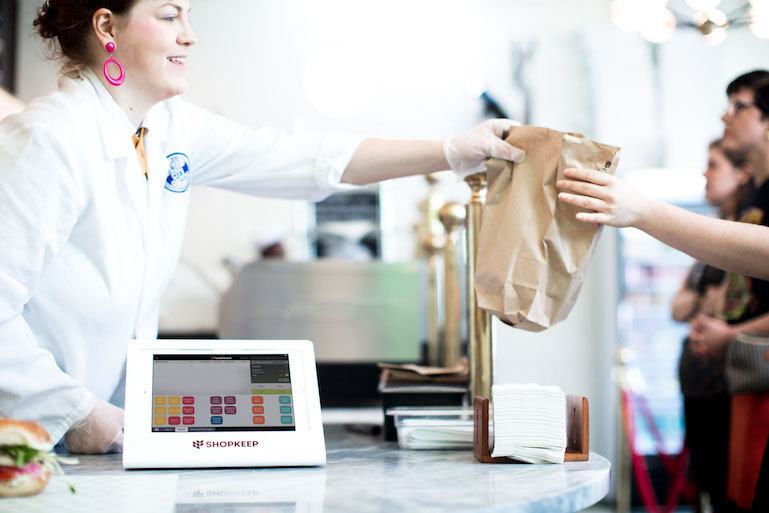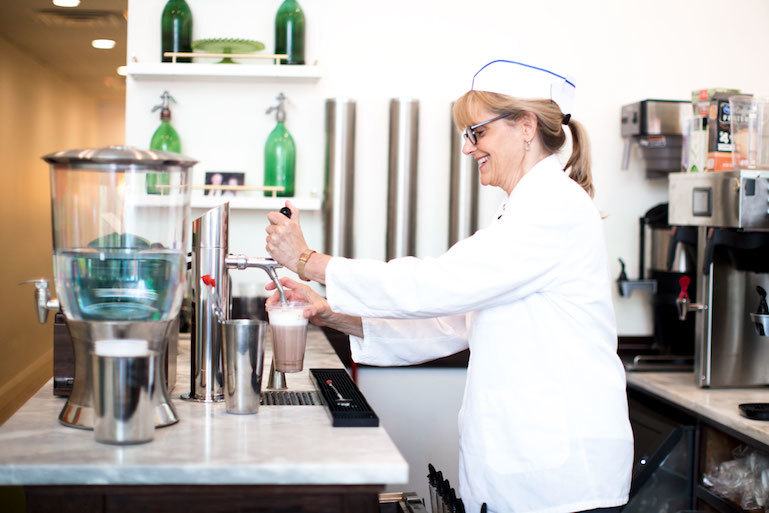
8 Easy Tips For Improving Restaurant Ticket Times
In the restaurant industry, slow ticket times can lead to a negative customer experience. To win repeat customers and positive online reviews, restaurants must find ways to reduce the amount of time customers spend waiting for their food.
Ticket times are particularly important during lunch, when many customers have limited time available before they need to return to work. If slow service is holding your restaurant business back, check out these eight top tips for how to improve restaurant ticket times.
Use Pre-Portioning
Take a look at your lunch menu. Can you pre-portion any of the top selling items to reduce the preparation time? This tip works best with popular menu items that you know are likely to be ordered multiple times during a typical busy lunch or dinner period. It probably isn’t worth pre-portioning items that are ordered less often. This will only compromise the freshness of the food without giving you any significant increase in ticket speed.
Streamline Your Menu
An overly complicated menu can lead to increased ticket times. If you have a wide-ranging menu, you could consider streamlining your menu down to include only your most popular meals. This tip allows your kitchen staff to focus on efficiently making a small number of high-quality menu items, rather than scrambling to put together a wide range of different meals.
Be sure to analyze which menu items are ordered most often before you start making changes to the menu, or you could risk annoying your most loyal repeat customers.
Create a Menu Matrix
Create a matrix that shows what ingredients and which parts of the kitchen (grill, salad station, fryer, etc.) each dish on the menu requires. Along with data that shows which menu items customers order most frequently, you can work out which kitchen stations are under the most pressure. You can then either redesign the kitchen or hire more staff to give these stations more resources. If neither of these choices is an option, you could also tweak the menu and your dishes to spread the load more evenly across all kitchen stations.
Consider Your Kitchen Layout
Take the time to watch your kitchen staff at work. Is there enough space for everyone to work, or do employees get in each others’ way? Do workers keep having to move around the kitchen to get the equipment or ingredients they need? Changing the layout of the kitchen may help back-of-house staff work more efficiently, as well as reduce employee fatigue and frustration. To get even more insight into problems with your current kitchen layout, ask kitchen employees about the problems they face during their day-to-day work.
SEE ALSO: What You Need to Know About Improving Restaurant Efficiency
Strive to Reduce Staff Turnover
High staff turnover can slow down your kitchen. When a significant proportion of your employees are still getting used to the job, they are likely to work slowly and make mistakes that take time to rectify. Reducing staff turnover ensures that you always have experienced workers that you can rely on. You can also leverage their experience to train new staff more quickly and thoroughly.
To encourage your best staff to stay with your business, try offering bonuses or pay raises for good performance, offer flexible working hours or increased amounts of leave to reduce employee burnout, and hire more employees to take the pressure off the people working in your kitchen.

Invest in Staff Training
Once you have hired enthusiastic employees and figured out how to keep them engaged over the long term, you need to invest in training so they can work as efficiently as possible. Every employee should receive training that helps them understand exactly what their role is and how you want them to carry it out.
Kitchen staff should be shown how to use every piece of equipment at their station. Front-of-house staff should know how to use your restaurant’s point of sale system so they can efficiently take payments from customers. Servers also need training in how to treat customers in your business. How should they greet customers? How often do you want them to check in during a customer’s meal? By standardizing training across all employees, you can help your restaurant run like a well-oiled machine.
SEE ALSO: How to Manage a Restaurant Kitchen Efficiently
Facilitate Foot Traffic
Sometimes, the underlying reason for slow ticket times in the restaurant industry is congestion, not in the kitchen, but on the floor of the restaurant itself. Poor table layout can prevent servers from moving easily between tables and the kitchen, which in turn slows down the process of taking orders and delivering food.
To curb this, create walkways within the restaurant, getting rid of one or two tables if necessary, to see whether you can eliminate bottlenecks, and in turn, reduce wait times. Cramming in more tables should, in theory, bring more revenue, but if it results in longer wait times for your guests, it’s probably not the best strategy for your business.
Speed Up The Process of Paying
Clearing tables quickly can help to reduce wait times in any type of restaurant, but it’s particularly important for quick-service restaurants that often have limited seating. On a busy night, this allows you to seat guests faster, and they, in turn, can place their orders more quickly. This improves the overall guest experience, and perception of the service, even if there’s a wait for the food.
To facilitate this, a good restaurant point of sale (POS) system allows your waiters and waitresses to take orders, print checks, and process payment for customers more quickly than they can with traditional methods. The ability to pay quickly is particularly important for many lunch customers, who need to get back to work or head to their next appointment. Using a POS system to make your payment process more efficient ensures that everyone leaves with a good feeling about your restaurant, which could increase the number of positive reviews your business receives.
All these tips can help you to improve ticket times in your restaurant, but we don’t recommend making all of these changes at once. Instead, prioritize the ones you think will make the biggest impact and go from there. While you are making changes to the way your restaurant operates, be sure to monitor metrics such as restaurant sales and customer satisfaction. It is very important to ensure that you do not compromise quality for the sake of speed if you want to continue to offer a positive customer experience.
Want to try ShopKeep for yourself?
Just answer a few easy questions.
Need help finding the right point of sale?
Just complete the form. We’ll call you right back to explain how ShopKeep can work for you.
Hit the ground running.Sprinting, in fact!
Read our free, comprehensive guide, Small Business 101, to learn all you need to know about starting a thriving business.

